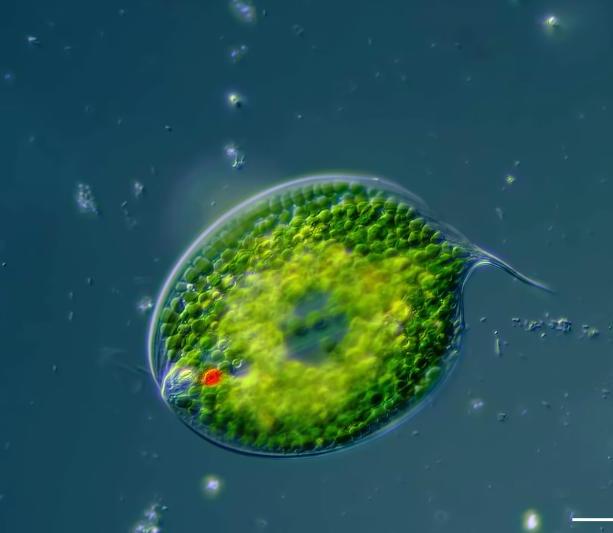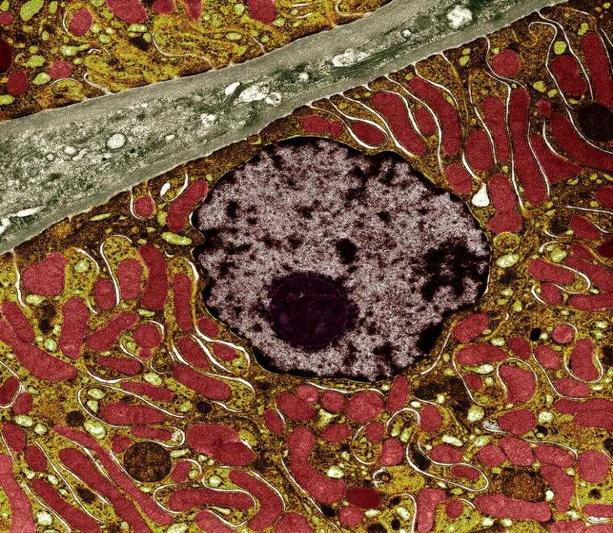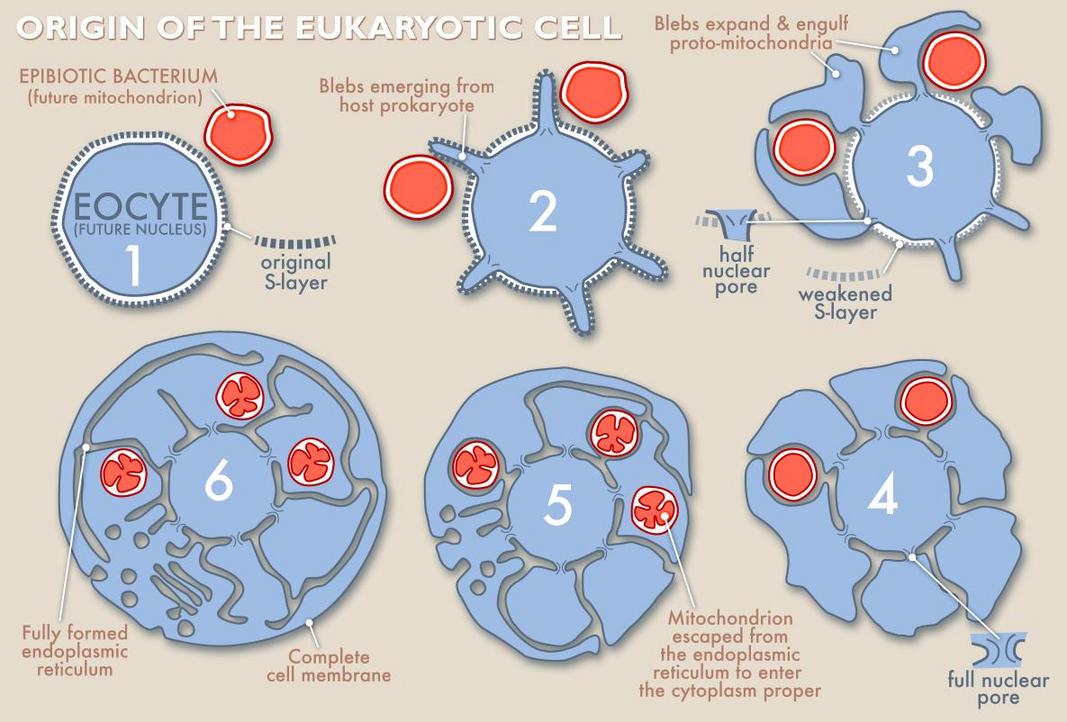

The structural and functional complexity1
2
found in and between living cells is remarkable. Whence
comes this complexity? It might be tempting to appeal to
the notion of irreducible complexity,
and thereby to assert that living cells could not have
evolved, but instead were designed and constituted by
some non-material guiding hand.
In this essay,
I present an evolutionary pathway from so-called prokarytic
cells to eukaryotic cells, and which pathway accounts for
much of the complexity found in the latter. The essay
follows from my reading of Duz and
Dincer,[1]
Gabaldon,[2]
and Devitt.[3]
Almost all plant and animal cells contain mitochondria. Mitochondria are important little organelles because they manufacture certain highly energetic molecules which cells need to get things done. Given the importance of mitochondria, then, where did they come from? There is compelling circumstantial evidence that a deep ancestral connection exists between mitochondria and certain types of bacteria. In fact, it is likely that mitochondria were once free-swimming bacteria. The key to this mitochondrial bacterial connection is something called endosymbiosis.
The coming about of endosymbiosis on Earth is considered a major evolutionary transition. Some organisms evolved an ability to live inside the cells of other organisms without being digested, and such that both themselves and their hosts cells benefit. Indeed, such endosymbiotic relationships between organisms are widely observed today.
A long time ago, life on Earth was much simpler than it is today. That's because only simple organisms existed. These were the bacteria, cyanobacteria and archaea. Each would consume each other. But the cyanobacteria also evolved an ability to convert carbon dioxide into food using sunlight. Some of the bacteria which were engulfed by the archaea were not digested. Instead, they acquired an ability to coexist inside the archaeal cells. In turn, the archaeal cells became accustomed to the presence of these bacterial cells inside their cytoplasm.
Over time, both the bacteria and the archaea grew to depend on each other more and more, sometimes even exchanging fragments of their own DNA material in a process known as horizontal gene transfer. Eventually, neither the host archaea nor the engulfed bacteria could survive without the other. And so the bacterial cells eventually lost their bacterial character and evolved into mitochondria. Correspondingly, the host archaeal cells lost their archaeal character and evolved into plant and animal cells. This is known as endosymbiosis. This remarkable connection is similar to how some cyanobacteria evolved to become the photosynthetic chloroplast organelles found in plants cells. Endosymbiosis thus inadvertently offered life an important evolutionary pathway for a ratcheting up of cellular complexity on Earth.

So in writing this short essay, I wish to honour those
early bacteria, cyanobacteria and archaea. I thank them
for their struggles to survive and thrive, and to learn
how to co-exist and cooperate. But I also lament that
as we inevitably dwell on our human-centric issues of
today and tomorrow, we often pay little heed to the role
that these and a myriad other creatures played across
the aeons in making us us.
Bacteria, cyanobacteria and archaea, with your
endosymbiosis,
please take a bow!
Download PDF how-did-complex-cells-evolve.pdf (411 KB)